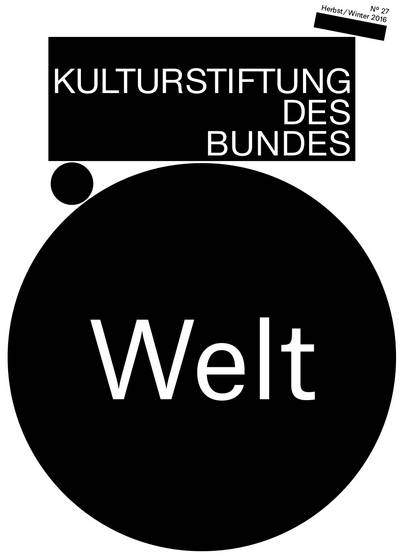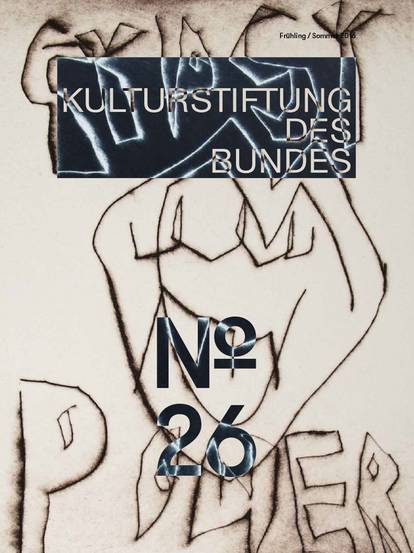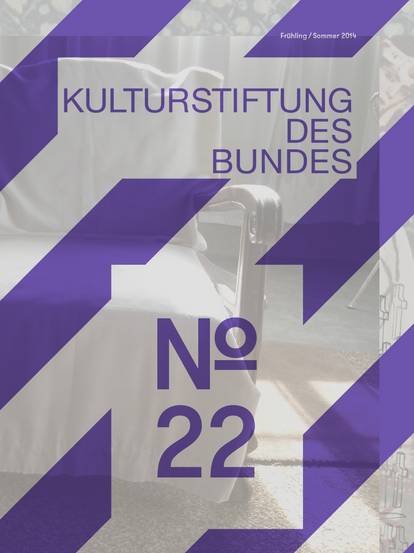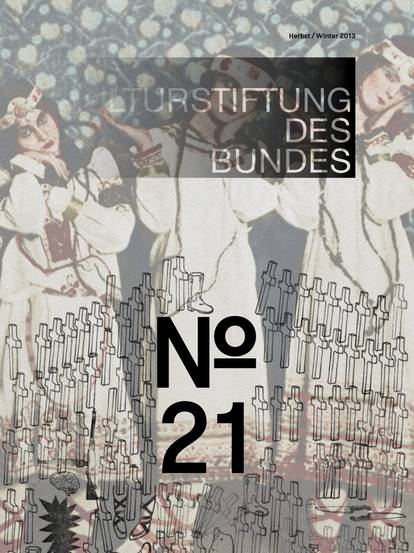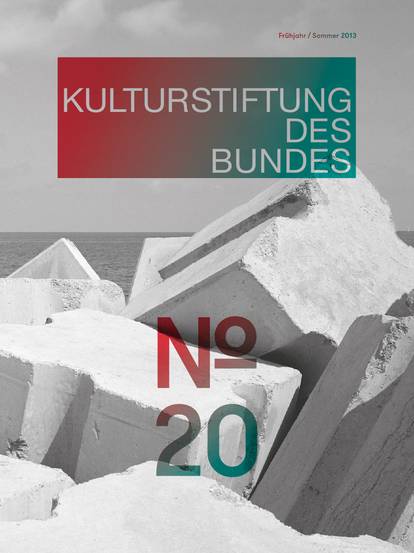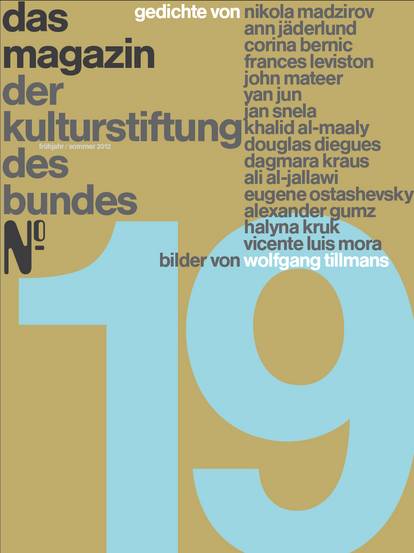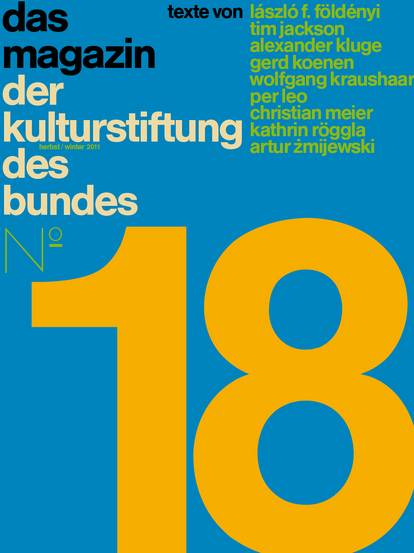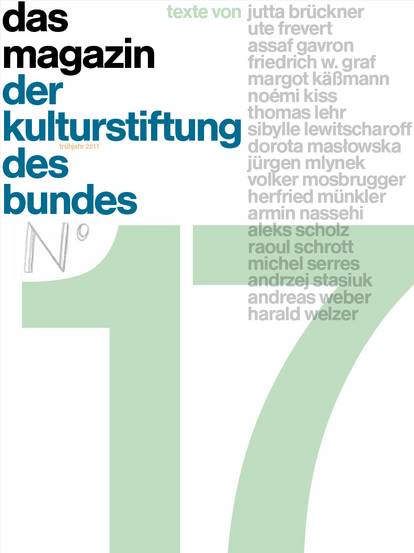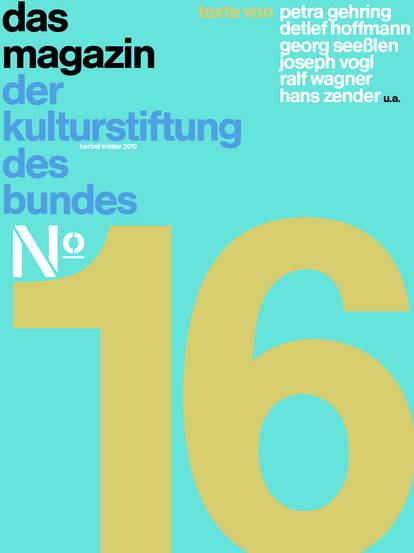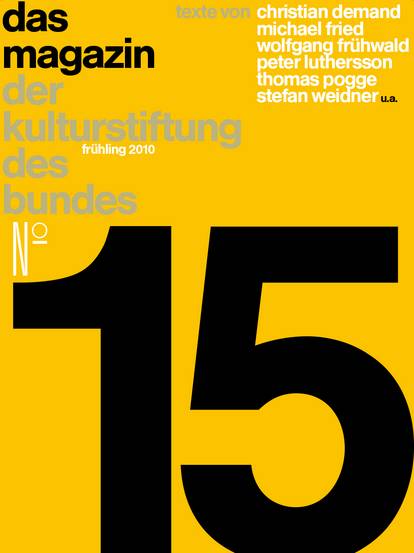In May 1940 Nelly Sachs (*1891 Berlin – †1970 Stockholm) boarded the last flight out of Berlin to Stockholm. During the next thirty years in exile, she was treated several times at psychiatric clinics, gained literary acclaim late in life and eventually won the Nobel Prize in literature in 1966. With funding from the Federal Cultural Foundation, the Jewish Museum in Berlin is hosting a new exhibition titled Flight and Metamorphosis – Nelly Sachs, Writer Berlin/Stockholm. In the following article, the Swedish writer and publisher Peter Luthersson recalls scenes from Sachs’ life and her friendship to her fellow writers Selma Lagerlöf and Paul Celan.
by Peter Luthersson
Her flat is preserved at the Royal Swedish Library in Stockholm. Taking a lift below ground, to the vaults that house the library's treasures, and following a long white passage with relentlessly strong electric lights, I end up outside an anonymous door. Inside is her flat, with her furniture and things placed the same way they once were at 23 Bergsundsstrand in the same city. Even the view is right. A magnified photo shows visitors what she would have seen through her window; water, and on the other side of the water, another shore.
Nelly Sachs fled Nazi Germany at the last moment, just before she was about to be deported to a concentration camp. Accompanied by her almost 70-year-old mother, she arrived in Stockholm on 16 May 1940. She travelled by air. A friend had told her it was difficult to reach the planned destination by train, even with the right papers. She was not certain she would be allowed to stay. “Sweden was an inhospitable country for refugees in those days,” wrote the poet Olof Lagercrantz – then editor-in-chief of the daily newspaper Dagens Nyheter – in an essay on Nelly Sachs from 1966, Den pågående skapelsen [The Creation in Progress].
23 Bergsundsstrand, a one-room flat with a bedstead recess, straight away became her residence in the new country. Initially she shared the few square metres with her mother, or actually right up to her mother’s death in the beginning of the 1950s. Sparsely furnished with a single bed, a table with a typewriter. A very small bookcase with books in Swedish, almost exclusively poetry. A bigger bookcase with books in German, mostly poetry there too. An austere group of sofa and armchairs with dark-blue upholstery. A couple of paintings and small pictures, such as a Greek 18th-century icon and a framed postcard of Saint Francis of Assisi.
There are a few minor personal belongings. Anyone pulling out one of the drawers in the bookcases will find a box with her visiting cards or a purse with withdrawal forms from a bank. In a corner there is a black handbag. On a pink dish there is a modest collection of stones and shells. Next to her bed there is an album with bookmarks, neatly pasted by a girl, preserved by a woman. In an envelope there are some more bookmarks, probably from the same time, but there was no room for them in the album. There is also a souvenir: a kitsch relief of a Värmland country house, Mårbacka in Sunne.
Already on her arrival in Sweden, Nelly Sachs was a literary name, not so much thanks to the book she had published in 1921, Legenden und Erzählungen, as to a correspondence she had started in her teens. Her pen-friend was Selma Lagerlöf, recipient of the Nobel Prize for Literature in 1909 and owner of the Mårbacka estate. Nelly Sachs, who was born in 1891, had written to Selma Lagerlöf, who was born in 1858, after having read and been filled with enthusiasm by The Story of Gösta Berling, Selma Lagerlöf’s first and breakthrough novel from 1891. A long line of letters now became a lifeline. Selma Lagerlöf made it possible for her pen-friend to come to Sweden. The Nobel Prize winner was assisted by a member of the royal family, Prince Eugen, himself a prominent painter and linked to a provisional anti-Nazi group, the Tuesday Club. Encouraged by Selma Lagerlöf, Prince Eugen arranged “a royal invitation” to Sweden for Nelly Sachs and her mother.
In her new country Nelly Sachs not only became a literary name but also a writer. She wrote in her mother tongue and her first collection of poems, In den Wohnungen des Todes, was published by the East German publisher Aufbau in 1947. An illustration on the flyleaf shows chimneys to crematory ovens where bodies of gassed Jews were burned. The opening poem, in time often reproduced and quoted, also focuses on these chimneys:
O the chimneys
On the ingeniously devised habitations of death
When Israel’s body drifted as smoke
Through the air –
Was welcomed by a star, a chimney sweep,
A star that turned black
Or was it a ray of sun?
O the chimneys!
Freedomway for Jeremiah and Job’s dust –
Who devised you and laid stone upon stone
The road for refugees of smoke?
O the habitations of death,
Invitingly appointed
For the host who used to be a guest –
O you fingers
Laying the threshold
Like a knife between life and death –
O you chimneys,
O you fingers
And Israel’s body as smoke through the air!*
Nelly Sachs was saved from extinction, and this circumstance gave her an incentive and a theme for her writing. One could say that she evaded the Holocaust but did not escape it.
Soon enough she was driven into insanity, forced on her by history. In the beginning of the 1960s there were long periods of treatment at the Beckomberga mental hospital for grave persecution mania. The traces of her conditions are obvious and painful to follow. In a letter to her fellow writer Paul Celan of 25 July 1960, she wrote: “A Nazi spiritualist gang is following me in such a dreadfully refined way by radio telegraph, they know everything, wherever I set foot. Tried with nerve gas when I was travelling. For years already secretly in my house, listening with microphones through the walls.”
Her friend Inge Wærn, in a conversation with Swedish literary historian Anders Olsson in April 2001, described her frame of mind in the summer of 1960. “That summer Nelly stayed with me for a while in my three-room flat in Gärdet. The Venetian blinds were drawn and the sound-level was as low as possible not to disturb Nelly. She communicated by writing notes, from fear of being monitored. She felt persecuted by the Nazis, who had installed listening devices in the walls. I could barely walk out the door to buy food.”
The following year things were better but risked deteriorating once more. In a letter of 18 October 1961 to another fellow poet, Gunnar Ekelöf, she wrote: “Dear Gunnar, now I have been in the flat for four weeks – it was wonderful to enjoy freedom, go anywhere without company, and to be able to sleep – they started over a couple of days ago, but I don’t want to lose heart, there are also good forces protecting me, but this invisible persecution with perfect radio engineering is worse.”
Inge Wærn, daughter of a Swedish father and a German Jewish mother, born in Sweden but raised in Berlin, trained as an actress with Max Reinhardt, later married to Swedish theatre manager Sandro Malmqvist, was a friend. Otherwise the protecting good forces, such as Selma Lagerlöf, Paul Celan and Gunnar Ekelöf, were often mainly pen-friends. Nelly Sachs never met Selma Lagerlöf, despite the fact that they corresponded for decades. When the airplane from Berlin landed in Stockholm that day in May 1940, Selma Lagerlöf had just suddenly died. The correspondence with Gunnar Ekelöf started in 1959. But the two only met once, despite the fact that they only lived some ten miles from one another. That was on Easter Eve in 1962, when both Nelly Sachs and Gunnar Ekelöf had been invited to a private party held for Hans Magnus Enzensberger during his visit to Stockholm. Paul Celan and Nelly Sachs had corresponded since 1954. The two saw each other a couple of times after their first meeting in Zürich in May 1960. She visited him in Paris, he visited her in Stockholm. In memory of their first meeting Paul Celan dedicated his poem Zürich. Zum Storchen to Nelly Sachs.
Nelly Sachs lived in her one-room flat at 23 Bergsundsstrand for thirty years, up until she died of cancer on 12 May 1970. There she wrote poems, plays and letters. The feeling of anxiety-ridden loneliness could be felt in every pore when, on a clear cold January day in 2010, I spent some time in the preserved flat at the Royal Swedish Library in Stockholm. I whispered when I talked to the librarian who accompanied me. She drew my attention to this circumstance: “It’s so strange. When you’re in here, you can’t speak in a loud voice.”
Visitors while Nelly Sachs was still alive can be counted on the fingers of one hand. One person with recollections is Ragnar Thoursie, a singular man. He was praised as a poet in his youth in the 1940s, a prominent man in Swedish literary circles. However, he abandoned poetry in order to work as a civil servant in the bureaucracy of the Swedish welfare state that for a long time kept expanding; an ideological choice of career. In his old age Ragnar Thoursie has returned as a (praised) poet, but he has also written a (praised) experimental memoir, a portrait of the poet as a director and an attack on a social democracy that betrayed its ideals, Elefantsjukan (Elefantiasis, 2001). It is in this experimental memoir that a significant account of the flat at Bergsundsstrand casually appears.
Ragnar Thoursie says that in connection with an official trip to Germany he promised to bring home a couple of copies of In den Wohnungen des Todes from East Berlin. It was the composer Moses Pergament who asked Ragnar Thoursie to do him this favour, since the book still had not “succeeded in penetrating the borders and reach Sweden”. The two knew each other from the morning paper Aftontidningen, where they both contributed. (There are a lot of unknown Swedish names for international readers. But they all influenced Nelly Sachs to become Nelly Sachs. Moses Pergament played an active role in making her known in Swedish cultural circles. He translated many of her poems and composed an – as yet unpremiered – opera, the libretto of which was based on Nelly Sachs’ play Eli. During the discussions about how to move on with the opera, Moses Pergament and Nelly Sachs fell out, but that is another story.) That is how Ragnar Thoursie turned up at Nelly Sachs’ flat with some books wrapped up in newspaper. He recalls: “She was so alone that time seemed to stand still in her small flat, and she was so frail that I wondered whether she would survive until her next visit. But the clock of her wit had by no means stopped, it moved with rare certainty: new poems were constantly born, like fresh white flowers in her prematurely aged hands, wonderful translations of contemporary Swedish poetry arose, a growing correspondence with writers and critics kept developing during the years that followed… After this first visit there would be many years of contacts with this lady rich in friends.”
Nelly Sachs’ literary recognition was not immediate. Her first four collections of poems were published by as many houses. It was not until Suhrkamp espoused her works in 1961 that conditions became stable. A new generation of intellectuals and literary critics, like Hans Magnus Enzensberger, whose party she attended on Easter Eve in 1962, drew attention to her poetry, its existential relevance and its linguistic mastery. She had gained a meagre income as a translator. Swedish poets like Gunnar Ekelöf, Johannes Edfelt and Erik Lindegren saw their poems translated into German. They returned the favour by translating Nelly Sachs’ poems into Swedish and thus contributed to making her noticed and appreciated in her new homeland. Nelly Sachs became a Swedish citizen in 1952.
The Swedish literary critic who more than anyone promoted Nelly Sachs was Bengt Holmqvist, a learned and aggressive representative of New Criticism, the ideal of the time. For decades Holmqvist held a leading position at the daily newspaper Dagens Nyheter. Incidentally it was to him and his wife, translator Margaretha Holmqvist, that Nelly Sachs bequeathed her belongings, and it was consequently the Holmqvists who donated her literary legacy to the Royal Swedish Library. In a long essay on Nelly Sachs, “The Language of Longing”, Bengt Holmqvist paid attention to the contrast between the poet’s adolescent environment, an upper-class Wilhelmian flat in the Tiergarten district of Berlin with a girl dreaming of becoming a dancer, and the plain room at Bergsundsstrand with the anxiety-ridden lady. Otherwise he mainly writes about what the anxiety-ridden lady did in the poor room – reading Jakob Böhme, the mystic of Jewish tradition.
As of 1960 and for the next couple of years she was in and out of Beckomberga mental hospital. Her lyrical style was then quite different from what it had been in 1947. In the early poems she had sought fundamental metaphors and symbols that clearly could convey her vision and feelings. Narrative features were common and a slightly reciting tone was not rare. Since then the poems had become more reduced, laconic and sort of withered. The late poems can appear as fragments of a whole that has disappeared, as remains of a message that will never be conveyed. This is the kind of poetry that is commonly described as the sibling of silence. The opening poem from In den Wohnungen des Todes, quoted above, can be compared to a related poem from Noch feiert Tod das Leben (1961), titled Scene from the play “Night-Watch”:
The eyes are shut
and then –
The wound bursts open
and then –
You bait with lightning
[ ]
secrets of the blood
[ ]
for the fish
Everything in the grave of the air
Victim
Executioner
Finger
Finger
The child paints with dust in the coffin
the navel of the world –
and between his teeth
the executioner holds the last curse –
What now?
It is a common view that Nelly Sachs’ late poetry has a stronger suggestive power than her early works. Personally I am not sure that this assessment is correct. However, it is obvious that her late style was more in accordance with the ideals of the circle of Swedish lyrical modernists who were her primary advocates. What looks and can be described as a development driven by inner motives could also be seen and described as an adjustment to an environment.
In the mid-1960s Nelly Sachs gained all the success a poet can gain. In 1965 she received the Friedenspreis des deutschen Buchhandels, next year she was awarded the Nobel Prize in Literature (shared with Israeli poet Shmuel Agnon). In her speech at the Nobel Prize banquet, Nelly Sachs apostrophised her saviours: Selma Lagerlöf and Prince Eugen. She also stressed the experience of coming to a country without knowing the language and without knowing a single person, a country where at least she could breathe the “air of freedom”. In interviews about her Nobel Prize Nelly Sachs described herself as “a representative of the tragedy of the Jewish people.” With empathy and identification as instruments she sought to give voice to the experiences of the Jews both in the Diaspora and during the Holocaust.
In Nelly Sachs’ individual fate, fellowship with Jewry became an important feature, in part strangely since in its origin it was not chosen but forced on her by circumstances beyond her control. She grew up in a secularised family that did not practise religious rites. Ironically it was Nazism that made her see the ties that bound her to a collective with a history. A later Nobel Prize winner, Imre Kertész, has described similar circumstances, so evident in his case too. Naturally Nelly Sachs also had links to the two countries in which she came to live her life. On the official web site of the Nobel Foundation it says that the 1966 Nobel Prize in Literature was awarded to “Nelly Sachs, Sweden”. However, if you look up Nelly Sachs in the Encyclopedia Britannica she is called a “German writer”. Here one has to be careful of far-reaching conclusions about belonging. If one wants to distinguish the components that create the individual destiny, one has to refer to the German language and a flat at Bergsundsstrand in Stockholm, in addition to the fellowship with the Jewish people and the fear of forces that may want to shatter this fellowship and exterminate this people.
* Translated by Michael Roloff, Penguin Books, 1971.

![[Translate to English:] Magazine 38](/fileadmin/_processed_/f/1/csm_Magazin38_Cover-Vorschau_921x1230_689f428dc3.jpg)
![[Translate to English:] Magazine 37](/fileadmin/_processed_/b/c/csm_Mag37_Cover-Vorschau_921x1230_b5129fdb2a.jpg)
![[Translate to English:] Magazine 36](/fileadmin/_processed_/2/a/csm_Cover_Magazin36__issuu_2f3cef97bb.jpg)

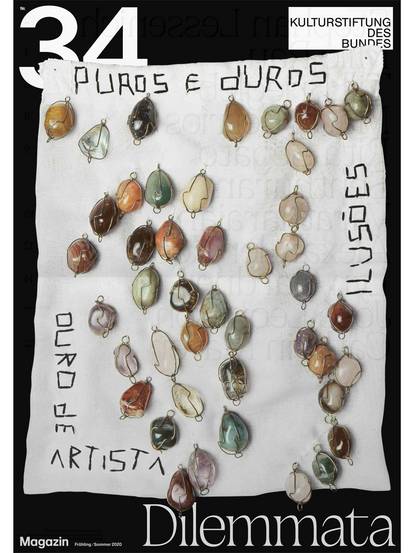
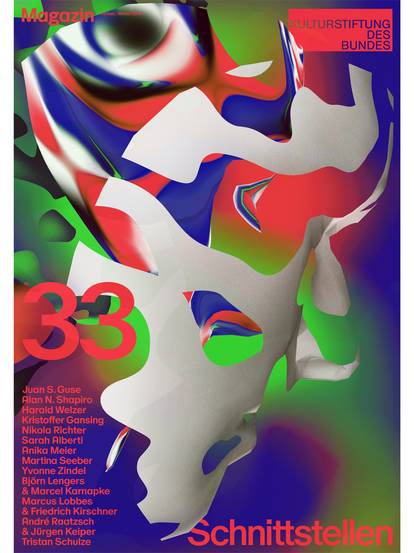
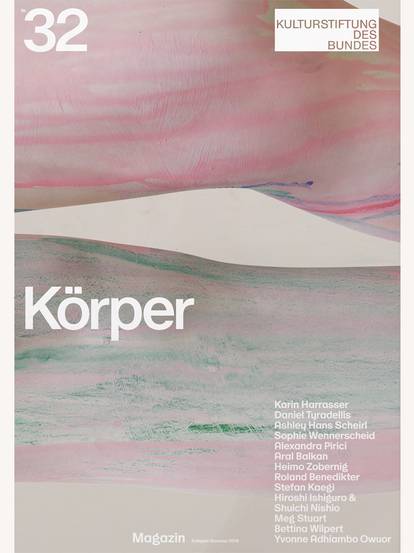

![[Translate to English:] Magazine 30](/fileadmin/_processed_/c/b/csm_magazin30_vorschau_9005f773d3.jpg)


